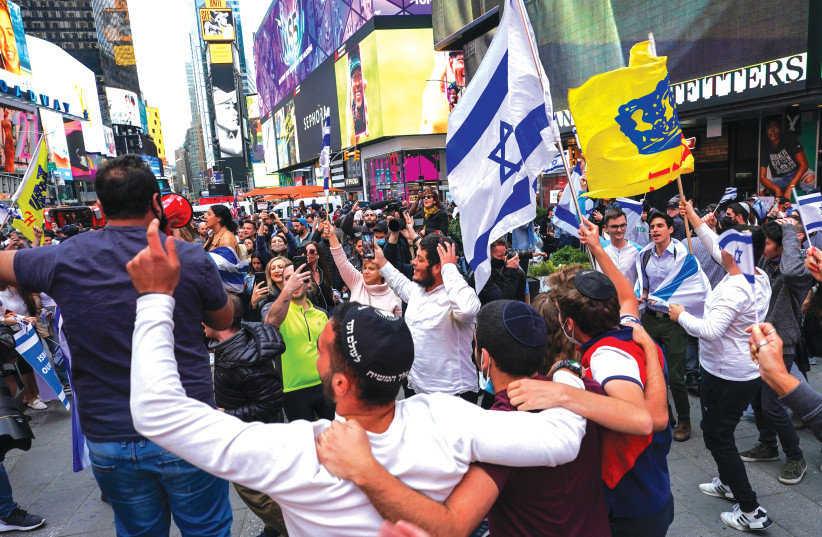Recently, US President Joe Biden denounced hateful Holocaust denial, and reminded us that we must not be silent in the face of evil, utilizing the oft repeated phrase “silence is complicity.” This was a very welcome statement and a necessary one in the frightening times that we are living in.
Jewish tradition contains this idea as well, that shtika k’hoda’a – a person’s silence can be taken as acquiescence. This leaves us with the question, how do ensure that we are not silent?
What is the right way to speak out?
There is a well-known, yet evergreen story in the Babylonian Talmud Tractate Gittin 55b that tells the tale of how silence in the face of injurious behavior causes unfathomable destruction and trauma. We are told of a wealthy host, who is holding a great feast. He asks his servant to invite his friend Kamtza – but the servant mistakenly invites the host’s arch-enemy Bar Kamtza.
Bar Kamtza arrives at the feast and the host is furious at his attendance. Bar Kamtza offers to pay for his portion of food, then half of the banquet and finally he offers to pay for the entire cost of the party. Reading the story, one can feel his desperation – just let me stay, do not humiliate me like this. The host refuses, and forcibly removes Bar Kamtza from the party.
Bar Kamtza leaves, presumably furious and deeply embarrassed. Interestingly, the Talmud tells us that his anger is actually directed at the other guests, rather than the host, and specifically at the Sages who were in the room, who did not protest his treatment. He decides that their silence was indeed acquiescence, and that they must approve of the behavior of the host, although this is neither confirmed nor denied by the narrator. We feel the sting of his pain in the words the Talmud places in his mouth; he states: “Since the Sages were sitting there and did not protest, learn from it that they were content with what he did.”

The story continues on to describe Bar Kamtza’s severe overreaction, by going to the Roman Leadership, and turning on his fellow Jews, devising a plot for their destruction. Which ultimately leads to the destruction of the Temple, the most traumatic moment of Jewish history in the eyes of the rabbis of the Talmud.
There is a beautiful and important moment of self-critique in this story. After all, the Sages are writing it themselves, and we hear their criticism of their own silence in this story. While learning this story recently with my colleagues at The Jewish Education Project, they pointed out that this story raises fundamental questions about power, leadership and complicity.
WERE THE rabbis silent because the host was a wealthy person? Did they see themselves as mere guests, and not the hosts themselves? Did they feel that speaking up would cause more embarrassment – both for the host, and for Bar Kamtza? Or perhaps they were indeed complicit in this moment and failed to do the right thing in the face of human pain.
We have all been in a situation like this, where we know that we should have spoken up, and yet we did not find the courage, or the right words with which to act, and to raise our voices. The story is asking us to take a long look in the mirror and see where we too have come up short, and the destruction that we may have caused.
There is another warning that this story provides for us, which can be found in the names of the two guests. A common tactic of the Talmud is to utilize the names of its characters to add depth and color to their message. Our story contains the names Kamtza and Bar Kamtza – and is the only place where these words are used as names. We find the word Kamtza elsewhere, as a reference to locusts.
The fact that these two characters were given the name of a destructive pest is significant. The Talmud is winking at us, and saying that the host failed here, not only by humiliating another person, but even before Bar Kamtza walked in the door, the host perceived Bar Kamtza as less than human. The fact that Kamtza has the same name as Bar Kamtza, the hated guest, may be an attempt by the Talmud to strengthen this warning of dehumanization, by hinting to the similarity between these two guests – although one is beloved, and the other hated.
Dr. Brene Brown, in her book Braving the Wilderness: The Quest for True Belonging and the Courage to Stand Alone, speaks about the dangers of dehumanization. She states: “Humiliation and dehumanizing are not accountability or social justice tools, they’re emotional off-loading at best, emotional self-indulgence at worst. And if our faith asks us to find the face of God in everyone we meet, that should include the politicians, media, and strangers on Twitter with whom we most violently disagree. When we desecrate their divinity, we desecrate our own, and we betray our humanity.”
Dr. Brown reminds us that there is something dangerous about demonizing our enemies – not just for what it can do to them, but indeed, what it does to us.
Today, we absolutely must speak out against evil. And the way that we speak out matters as well. Calling someone out does not allow us to forget that they too are human beings. We must preserve the humanity in those we oppose, even as we call out their behavior. Without that, we risk losing our own human dignity.
Rabba Yaffa Epstein is the Senior Scholar and Educator in Residence for The Jewish Education Project.
